
By Mary Alice Hayward
Mary Alice Hayward never thought much about birds until after retiring in 2021 and waking up one spring day to a bird attacking her dining room windows. Curiosity led her to find out what it was: a Great Crested Flycatcher. With that, her eyes opened up to discover and fall headfirst, deep down into the birding world. Mary Alice lives and birds on the Outer Banks barrier islands on the Atlantic Ocean, North Carolina, USA. She travels often and birds every day, no matter where she goes. Her favorite birds are the black and white ones.
The migrants are on the move right now, leaving the big north and heading down to the big south, passing through my home in the Outer Banks barrier islands of North Carolina in the United States. We welcome them all, especially the warblers, who are so colorful, full of energy, and spirit. These migrants are providing a welcome break from the usual monochrome palette of birds resident here, with a few exceptions. It happens just like that! Suddenly, one day in mid-August, you see a flash of extreme yellow, after months of beige, cream, white…yawn. Then you see a flash of lime, blue, green, or orange. These dots of color bounce around the marsh bushes, treetops, and tall grasses. Difficult to find with binoculars and even harder to photograph well, they are palm-sized little bullets of speed and color who search for food daily to keep their energy for the thousands of miles they will fly. Warbler season is here!
Migrants are welcome in the Outer Banks. We are in the middle of the Atlantic Flyway, and we have a long coastline with some good, protected, and varied habitat. Our migration seasons happen in the fall and spring. In the spring, we start seeing the first few warblers in early April, but things really heat up by late April into May. Mid-August initiates the start of fall migration, but it really isn’t hot until mid-September, when waves of warblers pass through on their way to Central and South America. Our experienced birders tell me that migrating warblers don’t sing in the fall, so you don’t hear them like you do in the spring. So visual spotting is key, and they like to stay up high or hidden in the mid-canopy of trees and bushes.

Our migrating warblers are concentrated primarily in one hot spot, appropriately named by eBird as the Duck Park Boardwalk. Located on the Currituck Sound on the sliver of barrier island along the Atlantic, this hot spot is in the town of Duck, North Carolina. Plenty of local birders keep vigils for the warblers as they come through, noting the waves of birds and timing for each species.
This fall, we saw our first warbler, the Prothonotary Warbler (Protonotaria citrea) flashing through the Sweetbay Magnolia (Magnolia virginiana) in the first days of August at the Duck Park Boardwalk hotspot.
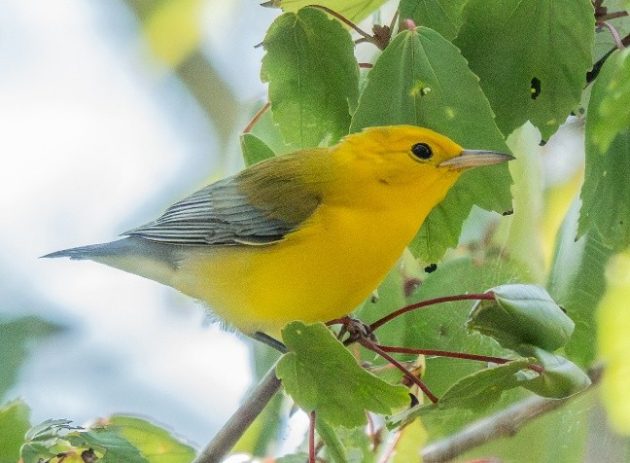
Prothonotary Warbler
Shortly after, several Yellow Warblers ( Setophaga petechia) arrived, peeking through our budding Baccharis bushes in the marsh.
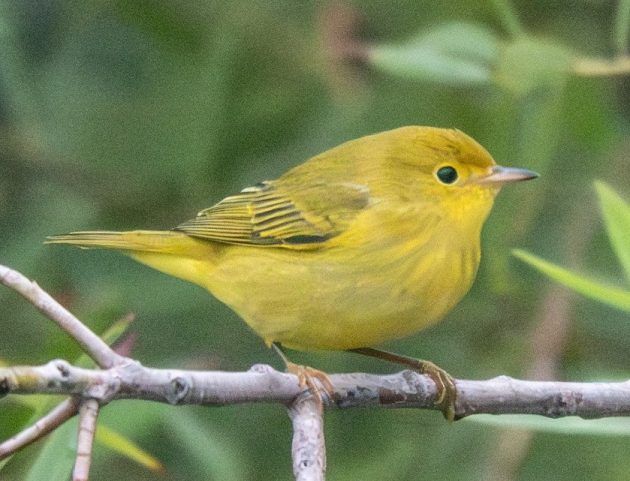
Yellow Warbler
By early September, our warbler variety expanded to include Black-and-white Warbler (Mniotilta varia), American Redstart (Setophaga ruticilla), Prairie Warbler (Setophaga discolor), Yellow-throated Warbler (Setophaga dominica), and Northern Parula (Setophaga americana).
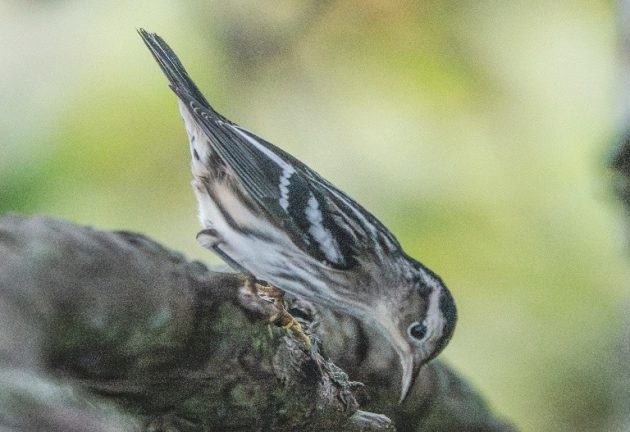
Black and White Warbler

American Redstart
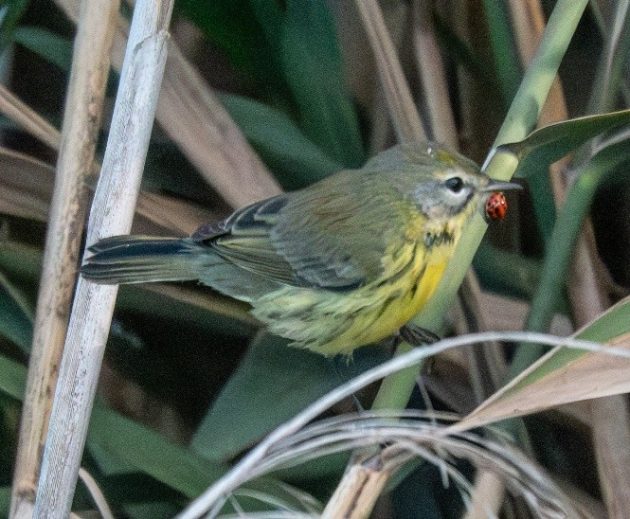
Prairie Warbler

Yellow-throated Warbler
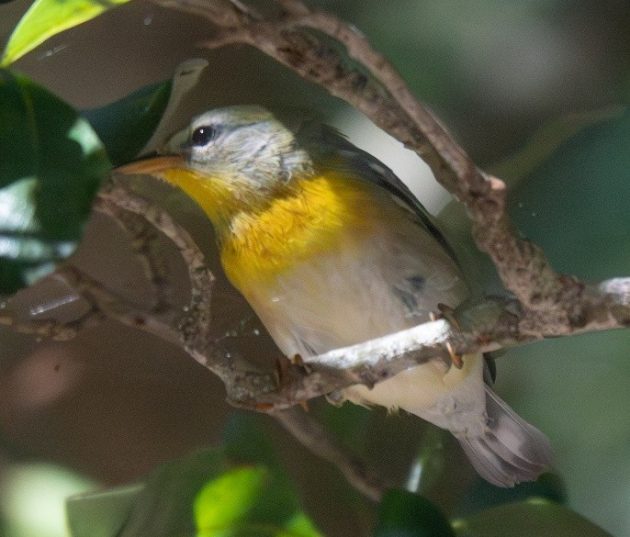
Northern Parula
Several bonus warblers, not commonly seen during migration, have also come through. The Chestnut-Sided Warbler (Setophaga pensylvanica) is one such beauty that used our coastal flyway, rather than the more inland route, to delight us.
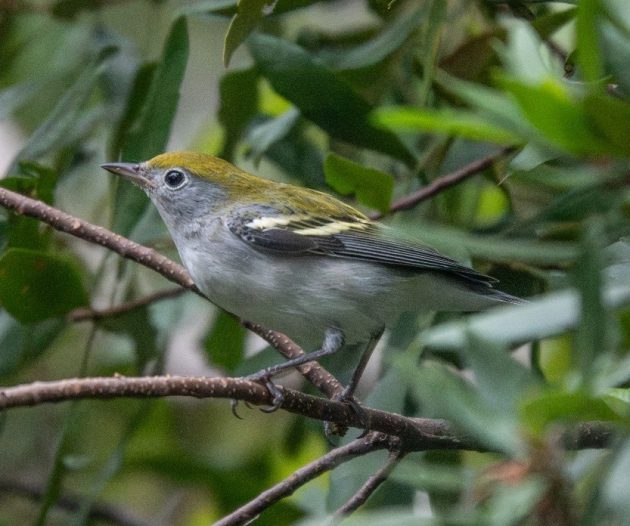
Chestnut-sided Warbler
As the month wanes and October arrives, we dread the arrival of that one migrant warbler that signifies migration is over – the Yellow-rumped Warbler (Setophaga coronata). This warbler winters in the Outer Banks, and it becomes the ubiquitous warbler of our bird lists and photos throughout winter. Welcome, Yellow-rumped, you have arrived at your winter home, and while there are no others behind you, we both know all we need to do is wait until spring.
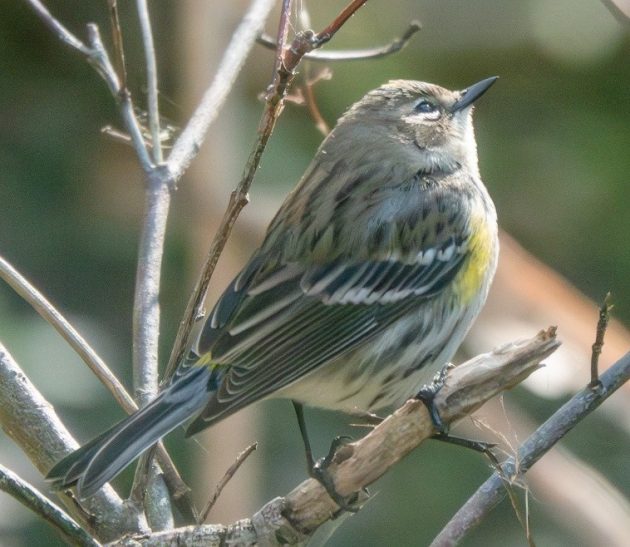
Yellow-rumped Warbler
All Photos by MA Hayward






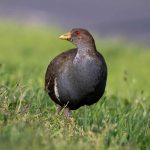
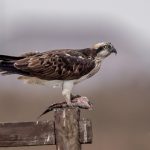
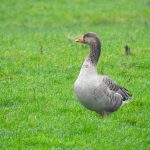

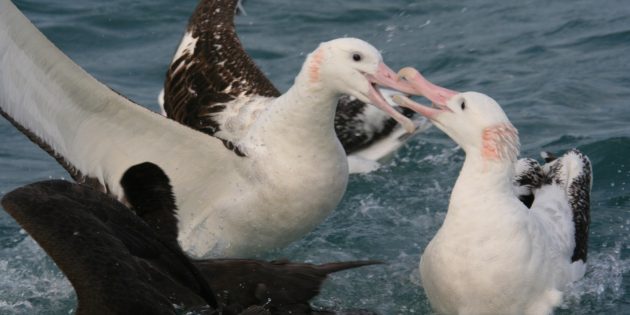
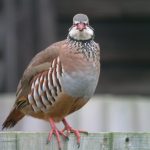
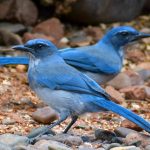
All beautiful and nicely caught on camera!
Beautiful written article, love the warblers. Love to hear their song. You are in a prime place to spot them. Enjoy. Thanks for the beautiful photos.